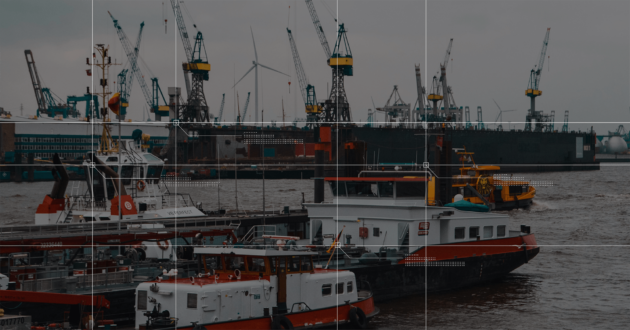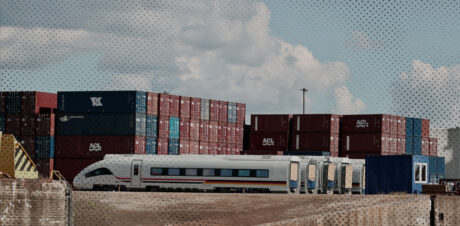European Union (EU) sanctions against Russia date back to July 2014 when Council Regulation (EU) No 833/2014 enacted restrictive measures in response to Russia’s actions destabilizing the situation in Ukraine, particularly the annexation of Crimea.
These measures were expanded following Russia’s military aggression against Ukraine in February 2022 with the aim of weakening the Russian economy, depriving it of critical technologies and markets and curtailing its ability to wage war.
Recent sanctions packages have imposed additional obligations for EU operators involved in the sale of identified Common High Priority (CHP) items to identify and assess risks.
In collaboration with the EU, Japan, and the United Kingdom, the U.S. Bureau of Industry and Security (BIS) developed a CHP list of items, identified by their Harmonized System (HS) codes, that pose a heightened risk of being diverted illegally to Russia because of their importance to Russia’s war efforts.
>> Discover how public records and trade data support sanctions due diligence efforts <<
Due diligence requirements per Article 12gb
Article 12gb of EU Regulation 833/2014 sets out a legal obligation for operators dealing with CHP items to have in place adequate due diligence procedures. EU entities and non-EU entities under the ownership or control of EU entities must:
- Take appropriate steps, proportionately to their nature and size, to identify and assess the risks of exportation to Russia and exportation for use in Russia for such goods or technology, and ensure that those risk assessments are documented and kept up-to-date.
- Implement appropriate policies, controls, and procedures, proportionately to their nature and size, to mitigate and manage effectively the risks of exportation to Russia and exportation for use in Russia for such goods or technology, whether those risks were identified at their level or at the level of the Member State or of the Union.
What due diligence means for EU entities and non-EU entities under their control
The EU now requires due diligence by manufacturers and exporters of CHP items to mitigate the risk of re-export of those items to Russia or for use by Russia.
In December 2024, the EU published FAQs related to these requirements for affected operators. This EU guidance includes a non-exhaustive list of checks and recommends considering “information from the public domain on the evolution of re-exportation of CHP items to Russia […].” These checks are recommended at the stakeholders, transaction and money flow, and transportation/logistics levels.
In the next subsection, we provide examples of these checks and how Sayari can help companies fulfill their due diligence obligations.
The EU FAQ acknowledges that “some of the relevant information may be hidden or difficult to detect”, but recommends that EU operators conduct a three-step strategic risk assessment:
- Identify threats and vulnerabilities by mapping out the elements in their range of services that are at risk of being involved in the re-exportation of CHP items.
- Perform a risk analysis to assess the nature of their risks and how these risks materialize.
- Regularly update the mapping of threats and vulnerabilities to remain current with evolving re-export methodologies and sanctions activity.
National authorities may carry out routine checks to verify whether EU operators are implementing Article 12gb. If a CHP item exported from the EU to a third country is found to have reached Russia, authorities may consider the EU exporter’s failure to conduct adequate due diligence as a violation of EU sanctions law.
>> Learn how to leverage public data to disrupt evolving sanctions evasion schemes <<
How Sayari helps identify diversion and sanctions risk
Integrated corporate and trade data and Sayari’s risk factors help companies exporting goods from the CHP list meet the increased obligations to conduct risk assessments among potential customers and distributors to prevent diversion. Sayari Graph, a solution for investigating complex corporate networks, enables organizations to quickly identify risk of re-export to enhance monitoring and due diligence processes while ensuring adherence to export control laws and sanctions. Graph provides clear provenance for all findings, enabling businesses to easily substantiate their due diligence.
Here are three example use cases of how Sayari Graph can identify risk factors and help EU organizations and their subsidiaries ensure compliance with sanctions.
Use Case 1 – Identify Risk Factors at the Stakeholder and Transaction Level
The EU recommends conducting checks at the stakeholder and transaction level to address such questions as:
- Are any of the stakeholders owned or controlled by entities under EU sanctions?
- Have stakeholders gone through changes in ownership after the adoption of sanctions?
- Does the transaction seem justified from a business perspective?
EU-recommended checks specific to stakeholders and individual transactions can be addressed by Sayari Graph.
Figure 1: Sayari Graph data shows an EU-sanctioned Chinese company with a controlling stake in two subsidiaries and a minority stake in a third.
Use Case 2 – Identify Risk Factors for Re-export of CHP Items
The EU identifies a nonexhaustive list of risk factors for re-export of CHP items including:
- A business partner shares an address with multiple other companies (i.e., is likely a shelf company)
- Change of ultimate beneficial ownership shortly before or after sanctions were imposed
- Use of trust arrangements or complex corporate structures involving offshore companies
Risk factors for diversion including changes in ownership over time and colocation can be identified by Sayari Graph.
Figure 2: Sayari Graph data identifies over 500 companies registered to a specific unit in a Hong Kong business tower. This address was added to the BIS Entity List in June 2024 as presenting a high risk of involvement in unlawful diversion.
Use Case 3 – Identify Risk Factors for Re-export of CHP Items Based on Historical Trade Activity
Beyond the risk factors identified by the EU, Sayari identifies diversion risk based on historical trade activity including:
- Entities that have exported to a sanctioned company
- Entities that have exported CHP items to Russia, Belarus, and/or Iran
- Entities that have exported to entities holding a Russian Federal Security Service (FSB) license
While historical trade activity is not explicitly mentioned by the EU, a history of exporting CHP items to Russia or general trade with Federal Security Service (FSB) license holders or sanctioned entities are all potential red flags that Sayari Graph can identify.
Figure 3: Sayari Graph data illustrating a Kyrgyz company that has exported CHP list integrated circuits to three Russian companies sanctioned by the U.S. and/or EU.
The sanctions landscape is constantly evolving, but performing due diligence is a common element in the regulatory environment. To see how Sayari Graph can help your organization proactively identify diversion risk and support due diligence efforts, request a personalized demo.



